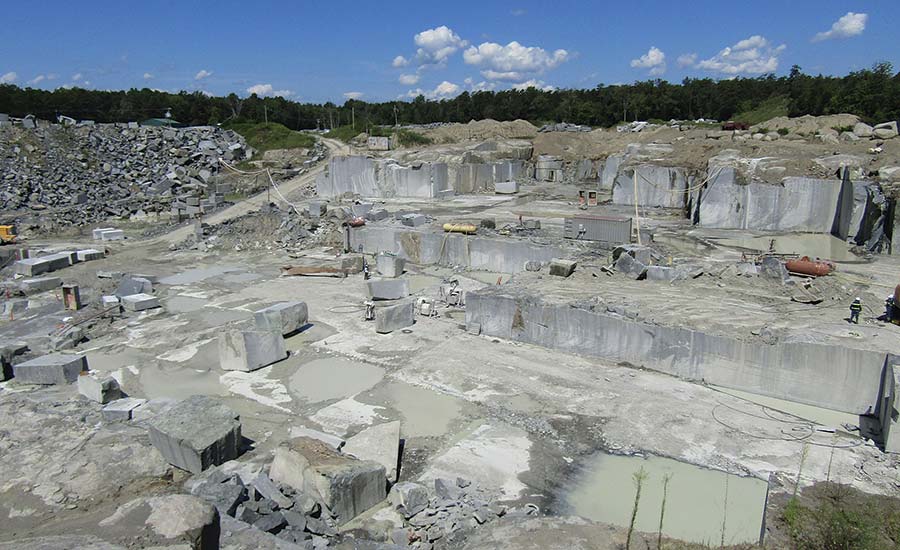Diving into of Granite Quarries in South Africa
Diving into of Granite Quarries in South Africa
Blog Article
Revealing the Mysteries of Granite Quarrying: Where Stamina and Beauty Meet
The world of granite quarrying is a realm where the raw strength of nature merges with human artistry to produce frameworks that stand the examination of time with an air of style. From the depths of quarries to the precise polishing in workshops, the procedure of transforming granite right into building wonders is a complex dancing of practice and technology. As we peer right into the depths of this ancient craft, we begin to discover the hidden ins and outs that shape the extremely essence of our built atmosphere.
The Origins of Granite Quarrying
In the record of building background, the origins of granite quarrying are shrouded in a tapestry of ancient craftsmanship and geological marvels. Dating back to ancient Egypt and Mesopotamia, the removal of granite from quarries noted the start of a trip that would at some point bring about the creation of some of the world's most famous frameworks.
Granite quarrying's roots can be mapped to the skilled artisans that recognized the stone's toughness and aesthetic appeal. With a mix of primitive devices and large decision, these early quarry employees uncovered granite blocks that would certainly become the building blocks of worlds.
As people progressed, so did the methods of quarrying granite. The Romans, renowned for their design prowess, established sophisticated techniques for removing granite to create monuments, temples, and roads that stood the test of time.
The legacy of these ancient quarrying practices continues to form contemporary design, with granite remaining a symbol of stamina and style in construction tasks around the world. (granite quarries in south africa)
Tools of the Quarrying Trade
The development of granite quarrying methods from old human beings to contemporary times highlights the crucial function played by the tools of the quarrying trade in forming the sector's practices. In old times, quarrying tools were rudimentary, typically being composed of blades, hammers, and wedges made from products like bronze or iron. These tools required considerable manpower and time to extract granite blocks from quarries.

Additionally, the introduction of pneumatically-driven devices and high-powered equipment has substantially lowered the physical labor called for in quarrying operations, enhancing worker safety and security and performance. As the quarrying sector remains to introduce, the devices of the trade stay at the center of driving development and shaping the future of granite removal.
Drawing Out Blocks of Granite
Making use of precision machinery and advanced techniques, the extraction of granite blocks from quarries has actually become an innovative procedure in the contemporary quarrying industry. The initial action involves recognizing the location and dimension of the granite deposit to figure out the most reliable removal technique. When a suitable site Website is picked, the removal procedure begins with the drilling of openings for the positioning of explosives. Managed blowing up strategies are then used to disintegrate the granite into convenient areas.

Sprucing Up and Ending Up Techniques
To achieve a remarkable surface area on granite blocks, proficient craftsmens employ a series of thorough polishing and completing methods. After the initial removal and forming procedures, the granite blocks go through a comprehensive polishing phase to enhance their all-natural beauty and resilience. One usual approach made use of in brightening granite is ruby abrasion, where industrial diamonds are used to grind and brighten the rock to a smooth finish. This procedure not just produces a shiny surface area yet likewise ensures uniformity in shade and structure across the granite block.
In addition to polishing, ending up methods are applied to additional improve the granite's appearance. By meticulously picking and applying these polishing and completing techniques, craftsmens can transform raw granite check my site obstructs right into elegant items that display both stamina and beauty.

Ecological Effect and Sustainability
With the expanding emphasis on ecological awareness in the industry, granite quarrying practices are progressively scrutinized for their influence on natural deposits and long-lasting sustainability. Quarrying for granite can have considerable ecological implications. The removal process frequently involves the usage of hefty equipment, explosives, and large quantities of water, causing habitat devastation, soil disintegration, and water pollution. Additionally, the transportation of granite from quarries to refining centers creates carbon discharges, even more adding to environmental destruction. granite quarries in south africa.
To reduce these effects and make certain sustainability in granite quarrying, market stakeholders are adopting various procedures. Applying innovative technologies to reduce power usage and water use, reclaiming quarried land for environmental repair, and advertising accountable sourcing practices are some methods being employed. Accreditations such as the Forest Stewardship Council (FSC) and the Leadership in Power and Environmental Design (LEED) assistance customers determine environmentally pleasant granite products.
Verdict
To conclude, granite quarrying is a procedure that calls for specialized tools and strategies to extract blocks of granite and polish them to a high level of coating. While the ecological influence of quarrying can be substantial, efforts are being made to boost sustainability techniques in the market. Generally, granite quarrying is a delicate equilibrium in between harnessing the toughness and style of this all-natural stone while reducing its effect on the atmosphere.
Report this page